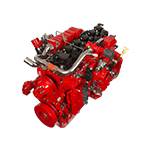Nov . 08, 2024 03:54 Back to list
Understanding Brake Drums and Pads for Vehicle Safety and Performance
Understanding Brake Drums and Pads Essential Components of Vehicle Safety
When it comes to vehicle maintenance and safety, one cannot overlook the importance of the braking system. Among its various components, brake drums and pads play a fundamental role in ensuring that vehicles can stop effectively and safely. Understanding how these components work and the signs that indicate they need maintenance can help drivers extend their lifespan and maintain optimal safety on the road.
What are Brake Drums and Brake Pads?
Brake drums are typically found in drum brake systems, which are more commonly used in the rear wheels of vehicles, whereas brake pads are part of disc brake systems, widely used in the front wheels. The brake drum is a cylindrical component that houses the braking mechanism. When the driver presses the brake pedal, brake shoes inside the drum expand against the inner surface of the drum, generating friction that slows down or stops the vehicle.
On the other hand, brake pads are flat components made of friction material. In a disc brake system, when the brake pedal is pressed, hydraulic fluid forces the brake pads against a rotatable disc (or rotor), creating the necessary friction to halt the vehicle. Both systems have their pros and cons; while drum brakes are often more economical and provide better braking performance under certain conditions, disc brakes offer superior heat dissipation and are less prone to brake fade.
Importance of Maintenance
Regular maintenance of brake drums and pads is crucial for vehicle safety. Over time, the friction material on brake pads can wear down, leading to decreased effectiveness and longer stopping distances. Signs that your brake pads need attention may include squeaking or grinding noises when braking, a soft or spongy brake pedal, or vibrations during braking. Similarly, brake drums can become warped, cracked, or rusted, leading to poor braking performance.
Inspecting brake components regularly can prevent more significant issues and costly repairs down the line. Mechanics often recommend checking the brake pads and drums during routine maintenance, particularly when other related work is being done, such as tire rotations or suspension checks.
brake drums and pads

Signs of Wear
It's critical for drivers to be aware of warning signs indicating that brake drums and pads may be due for replacement. In addition to unusual noises, increased braking distance, and vibrations, drivers might notice a dashboard warning light indicating an issue with the brake system. If these signs appear, it's essential to consult a professional mechanic promptly.
Another thing to keep in mind is that brake pads generally need to be replaced more frequently than brake drums. While most pads should last between 30,000 to 70,000 miles, drums can often last much longer with proper care. However, this can vary widely based on driving habits, vehicle type, and environmental factors.
Choosing Quality Parts
When it comes time to replace brake components, quality matters. Opting for high-quality brake pads and drums can significantly impact braking performance and vehicle safety. Additionally, it’s essential to ensure that the components are compatible with your vehicle make and model to guarantee proper fit and function.
Conclusion
In summary, brake drums and pads are critical components of a vehicle's braking system, contributing directly to safety on the road. Regular inspection and maintenance can ensure optimal performance and prevent potential hazards. By staying vigilant for signs of wear and opting for quality replacements, drivers can help maintain the effectiveness of their vehicle's braking system and, most importantly, ensure their safety and the safety of others on the road. Remember, the cost of preventive maintenance is always less than the price of ignoring potential braking issues.
-
Durable Brake Drum MAZ for Heavy Duty Trucks | High Performance
NewsAug.26,2025
-
FUWA: Premium Quality, Reliable Performance & Innovative Solutions
NewsAug.25,2025
-
Liza Brake Drum: Superior Quality & Performance for Safe Driving
NewsAug.24,2025
-
Iveco Brake Drum | Premium OE Quality for Daily & Eurocargo
NewsAug.22,2025
-
Your Brake Drum Man: Quality & Performance Parts
NewsAug.21,2025
-
Explore Japan: Ultimate Travel Guide & Authentic Experiences
NewsAug.19,2025
